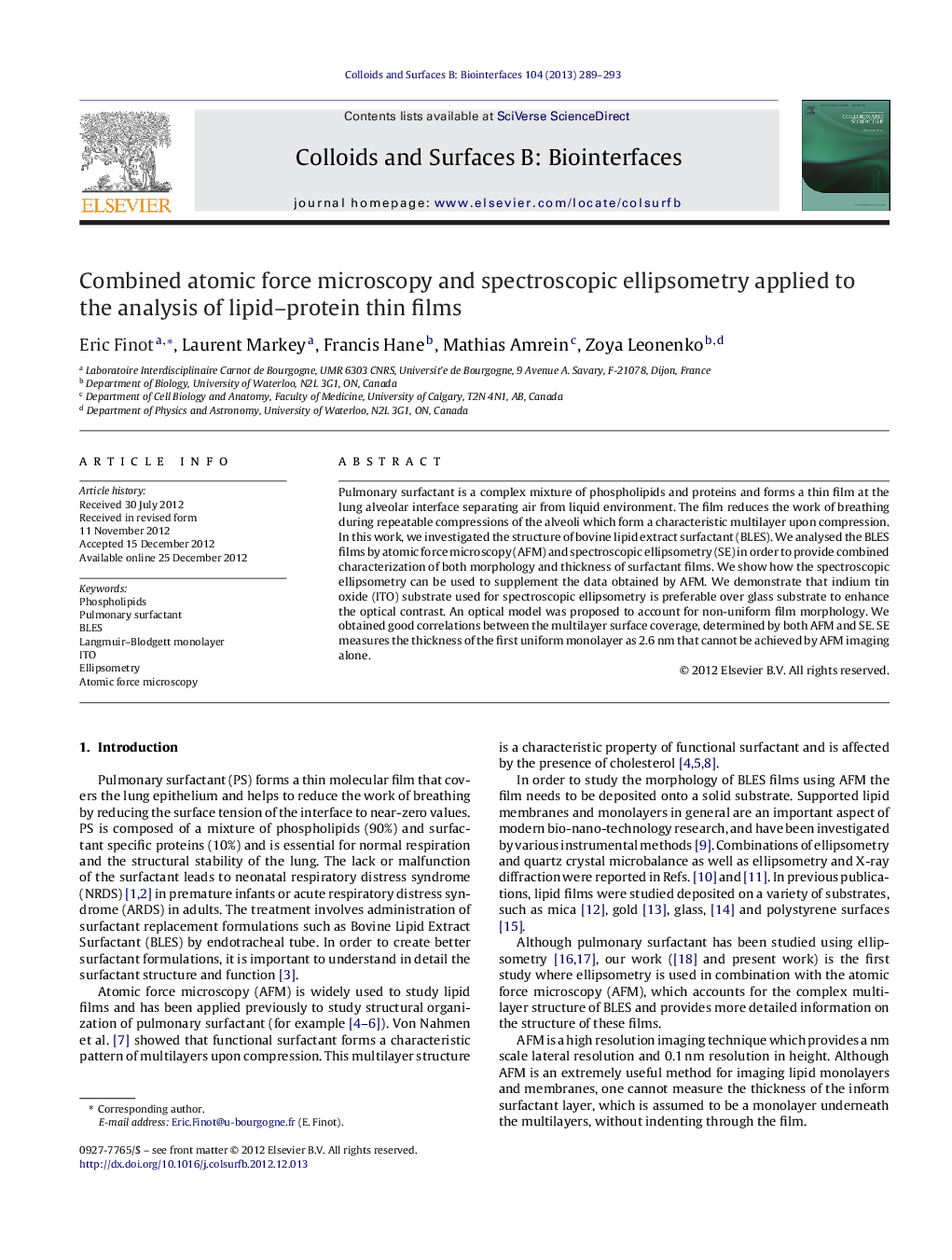| Article ID | Journal | Published Year | Pages | File Type |
|---|---|---|---|---|
| 600060 | Colloids and Surfaces B: Biointerfaces | 2013 | 5 Pages |
Pulmonary surfactant is a complex mixture of phospholipids and proteins and forms a thin film at the lung alveolar interface separating air from liquid environment. The film reduces the work of breathing during repeatable compressions of the alveoli which form a characteristic multilayer upon compression. In this work, we investigated the structure of bovine lipid extract surfactant (BLES). We analysed the BLES films by atomic force microscopy (AFM) and spectroscopic ellipsometry (SE) in order to provide combined characterization of both morphology and thickness of surfactant films. We show how the spectroscopic ellipsometry can be used to supplement the data obtained by AFM. We demonstrate that indium tin oxide (ITO) substrate used for spectroscopic ellipsometry is preferable over glass substrate to enhance the optical contrast. An optical model was proposed to account for non-uniform film morphology. We obtained good correlations between the multilayer surface coverage, determined by both AFM and SE. SE measures the thickness of the first uniform monolayer as 2.6 nm that cannot be achieved by AFM imaging alone.
Graphical abstractFigure optionsDownload full-size imageDownload as PowerPoint slideHighlights► ITO substrate enhances the optical contrast in spectroscopic ellipsometry. ► An optical multilayer model is built to measure non-uniform lipid film morphology. ► Surface coverage and thickness of lipid conformation are determined by both atomic force microscopy and the spectroscopic ellipsometry. ► The thickness of the first uniform monolayer of lipid film on glass or ITO is 2.6 nm.
